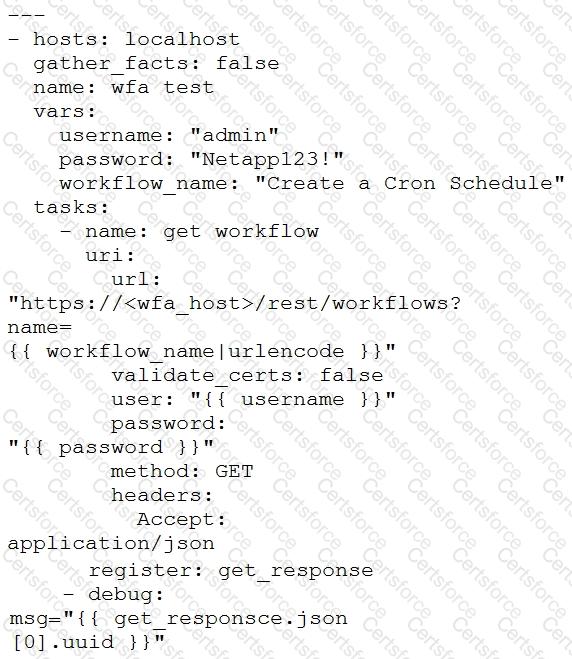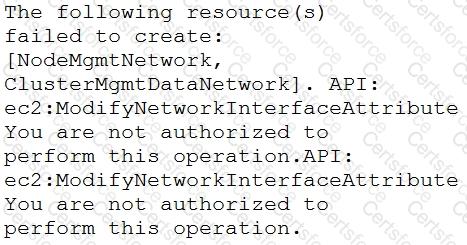What are two differences between a container and a VM? (Choose two.)
Your manager has informed you that any new solutions that you deploy must support SnapMirror technology for replicating data back to your main data center, where a large ONTAP cluster provides data protection.
In this scenario, which two solutions satisfy this requirement? (Choose two.)
Your software development team creates and deploys applications to Kubernetes. You want to provide the team with metrics from the applications resource usage.
In this scenario, which two products would satisfy this requirement? (Choose two.)
You are sending API commands to NetApp Cloud Manager.
In this scenario, which type of authorization is used?
You are performing a default deployment using Kubernetes.
In this scenario, where is persistent data stored?
You are deploying NetApp Cloud Volumes ONTAP in Azure. As part of this deployment, you must enable NetApp Volume Encryption (NVE) to protect your data at rest.
In this scenario, which supported step would you perform?
You have existing OnCommand Workflow Automation workflows. You are required to run these existing workflows in Ansible.

When you run the playbook that is shown in the exhibit, what is displayed?
Exhibit:

What does the JSON code shown in the exhibit represent?
A customer has implemented a NetApp-based hybrid cloud solution using NetApp Cloud Volumes ONTAP for AWS and NetApp Cloud Volumes ONTAP for Azure. Users are complaining about slow read and write speeds when they access data from Microsoft Azure while they are using compute resources in AWS.
Which three actions would solve the problem? (Choose three.)
While creating a Cloud Volumes ONTAP cluster in Amazon Web Service (AWS) in Cloud Manager, you receive the message shown in the exhibit.

What is the root cause of this problem?